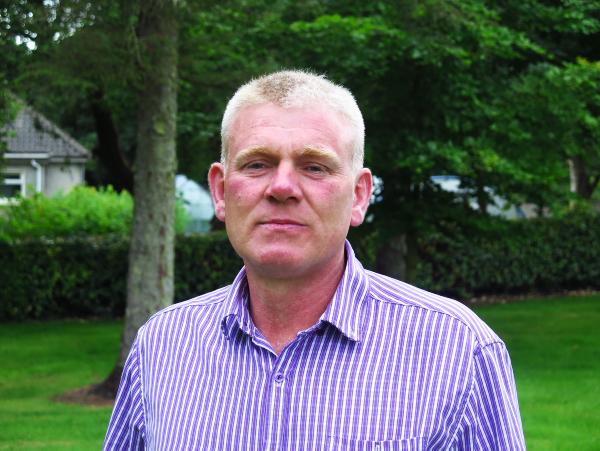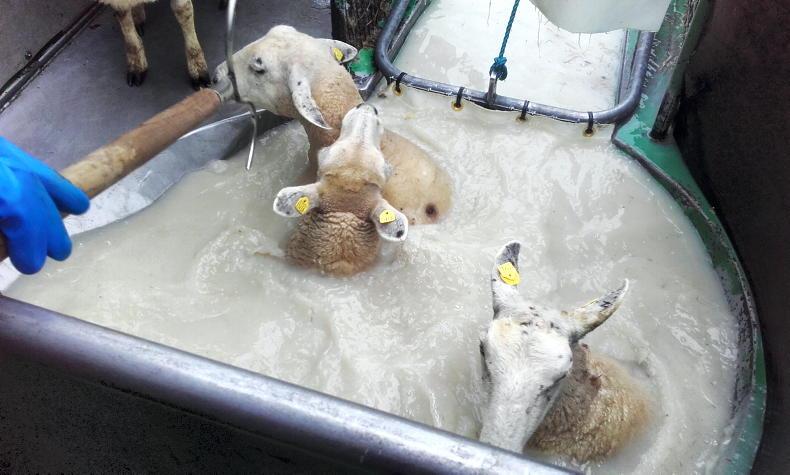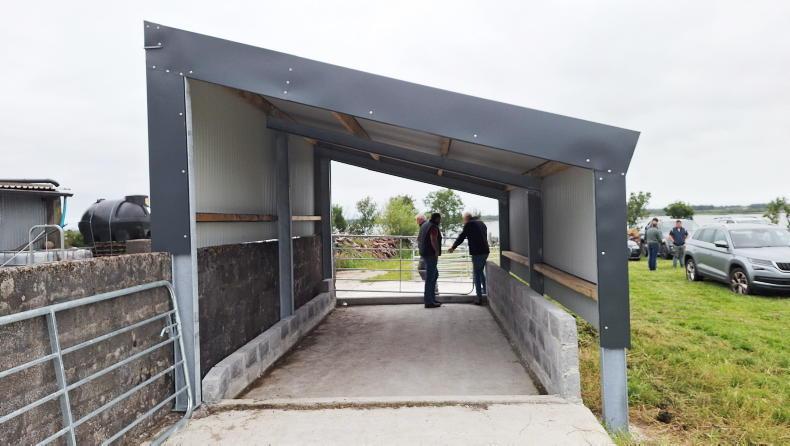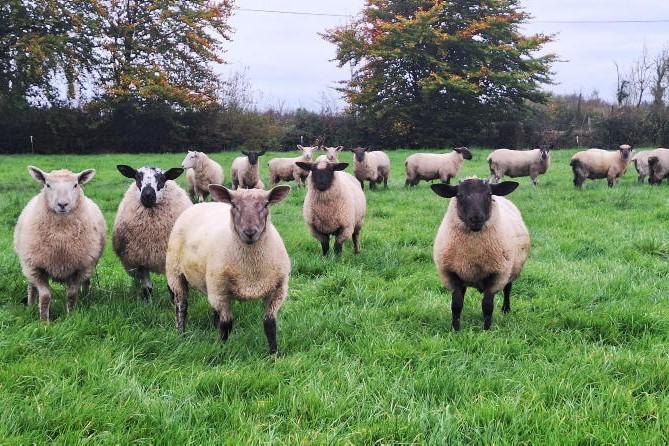As part of our series on suckler farming in Ireland, last week we spoke to farmers from the southeast to see where they thought the future lies. As there can be a large differential in both the systems and mindset between farmers in the east and west, this week we got the views of two western suckler farmers. One full-time and one part-time. Neither sees many farmers in the west transferring from sucklers and/or sheep to dairying. They are both keen to develop their suckler enterprise.
Fragmentation
Gabriel Gilmartin, who is a former president of the ICSA, said even before western farmers get working in the morning, they are a severe disadvantage to farmers in the east because so many are working on land that is fragmented and limited.
“There are a couple of obstacles in the way, as I see it, in the west of Ireland. Broadly speaking, the west of Ireland farmer can’t go into dairy or he can’t put down the plough,” Gilmartin said.
“Fragmentation, now that is a huge issue, probably the biggest. A farmer has 15 or 20 acres at the house, then he has to go 500m to the next plot and then five miles to the next one – that’s a huge time pressure on them. They’re running around all day getting nothing done.”
Gilmartin himself works on a fragmented farm. He farms cattle and sheep at home in Sligo as well as making the 200-mile round trip to Mullingar to an out-farm. He maintains that to get a wage out of the farm, he needed to rent a decent block of land such a distance from his home.
“It’s a four-hour trip, not counting the work, every day,” he said. “You look there at Leitrim, Donegal, Sligo, west Cavan, Mayo. A lot of these guys have farms taken up the country, in Westmeath or Meath or Offaly. It’s the only way productive farmers can get farming a good plot in one area,” Gilmartin said.
Trevor Boland also works in a fragmented system, and he agrees that it is tough. He maintains that by planning and management of numbers, it can work: “The problem with fragmentation is that if you want to put in a paddock system and have them moving around or take silage off a certain area it is tough.
“A farmer needs to plan for only the amount of stock that the out-farm can take and nothing more and leave them there, ideally with a paddock system in place. If you have more than you should then you have to be bringing animals to and from different farms and it’s a major cost on its own. You shouldn’t put in any more stock than the out-farm needs for the entire grazing season,” he said.
CAP
For Gilmartin in particular, the latest round of Common Agricultural Policy (CAP) reform was unpalatable. He says that the outcomes will make it difficult for the next generation of farmers to enter suckling.
“Most farmers in the west of Ireland would be very disappointed with their share of the new CAP,” he said.
“ hand has been into their pocket and money that they need more than a lot of people, has been ripped away. Especially the productive suckler farmer. You have to encourage the next generation as much as possible and the way you do that is by showing there is a future where you can get a decent income,” he added.
Leadership
Boland has mixed views on the leadership being given to suckler farmers at what is a difficult time for most. Groups such as Bord Bia, the ICBF and Teagasc have come under pressure from farmers and farm organisations to offer the correct and relevant leadership
“I’ve no problem with what Teagasc is doing. I think they’re offering the right advice for inside the farm gate, it has no interest outside the farm gate and I don’t think they have a role in that. That’s for other people to worry about ... I look at the work being done by the BETTER farms. I follow how Marty Lenehan (Sligo BETTER farm participant) operates and I see that it works. I’m trying to do what he has done because I see that it has worked,” Boland said.
Both men were particularly critical of the role Bord Bia has been playing throughout the seven-month beef price collapse. For different reasons, the two men have qualms about the food board. For Gilmartin, it is the Quality Assurance Scheme, while Boland thinks more could be done on the marketing of Irish beef abroad.
Gilmartin said: “My farm is quality assured and for the latest inspection around 350 boxes had to be ticked to remain [in the scheme]. That poses the question why isn’t everything that’s coming off my farm, whether it’s a cull cow or a heifer, quality assured? I jump through hoops for them, they should do the same for me.”
Boland focused on the marketing side of Bord Bia’s remit. “I don’t think they’re doing enough to sell our beef. Once the kill goes above 30,000 in any given week, the price drops. We’re meant to be growing the beef industry but we can’t do that if what we’re producing now is causing an oversupply. We’re not doing enough to see our sales go up abroad.”
As well as taking issue with certain parts of the work carried out by Bord Bia, Boland said some of the advice being provided to farmers is questionable in the short and long term.
Boland thinks the basics of the suckler system will remain despite other systems being pushed. Dairy calf to beef has been pushed as an alternative to traditional suckling but Boland does not agree.
“I’m of the opinion, whatever everybody else is doing, I’ll do the opposite. We all can’t go blind into one system without testing it out. A suckler cow system has worked in the past and will continue to work, I feel. Keep away from whatever everybody else is doing,” he said.
However, he does recognise the need for advice to be given on the type of animal the suckler farmer needs to produce for the markets they supply.
“We’re only two or three months away from the start of the weanling sales – the most important time of the year for the majority of the suckler herd – and we don’t know whether we should have big or small animals. Whether or not they should be under a certain weight or over it. That just isn’t good enough, we can’t be left in the dark and hope that someone puts up the hand at the ring on mart day,” Boland said
Gilmartin concluded by offering a couple of pieces of advice.
“Farm smarter rather than harder, get as much grass on your farm as possible and keep good stock.”
Gabriel
Gilmartin
Gabriel is a suckler and sheep farmer from Ballintrillick, Co Sligo. He farms at his home at the base of Benbulben as well as having an out-farm in Westmeath. Gabriel believes that land fragmentation and a lack of supports for suckler farmers are two barriers to growth.
Trevor
Boland
As well as working as an accountant, Trevor is a part-time suckler farmer from Dromard, Co Sligo. His farm is also fragmented, with a number of blocks four or five miles apart. Trevor thinks that farmers get too caught up in current trends and should concentrate on breeding good quality stock.
Comment - Efficiency can only go so far.
As part of our series on suckler farming in Ireland, last week we spoke to farmers from the southeast to see where they thought the future lies. As there can be a large differential in both the systems and mindset between farmers in the east and west, this week we got the views of two western suckler farmers. One full-time and one part-time. Neither sees many farmers in the west transferring from sucklers and/or sheep to dairying. They are both keen to develop their suckler enterprise.
Fragmentation
Gabriel Gilmartin, who is a former president of the ICSA, said even before western farmers get working in the morning, they are a severe disadvantage to farmers in the east because so many are working on land that is fragmented and limited.
“There are a couple of obstacles in the way, as I see it, in the west of Ireland. Broadly speaking, the west of Ireland farmer can’t go into dairy or he can’t put down the plough,” Gilmartin said.
“Fragmentation, now that is a huge issue, probably the biggest. A farmer has 15 or 20 acres at the house, then he has to go 500m to the next plot and then five miles to the next one – that’s a huge time pressure on them. They’re running around all day getting nothing done.”
Gilmartin himself works on a fragmented farm. He farms cattle and sheep at home in Sligo as well as making the 200-mile round trip to Mullingar to an out-farm. He maintains that to get a wage out of the farm, he needed to rent a decent block of land such a distance from his home.
“It’s a four-hour trip, not counting the work, every day,” he said. “You look there at Leitrim, Donegal, Sligo, west Cavan, Mayo. A lot of these guys have farms taken up the country, in Westmeath or Meath or Offaly. It’s the only way productive farmers can get farming a good plot in one area,” Gilmartin said.
Trevor Boland also works in a fragmented system, and he agrees that it is tough. He maintains that by planning and management of numbers, it can work: “The problem with fragmentation is that if you want to put in a paddock system and have them moving around or take silage off a certain area it is tough.
“A farmer needs to plan for only the amount of stock that the out-farm can take and nothing more and leave them there, ideally with a paddock system in place. If you have more than you should then you have to be bringing animals to and from different farms and it’s a major cost on its own. You shouldn’t put in any more stock than the out-farm needs for the entire grazing season,” he said.
CAP
For Gilmartin in particular, the latest round of Common Agricultural Policy (CAP) reform was unpalatable. He says that the outcomes will make it difficult for the next generation of farmers to enter suckling.
“Most farmers in the west of Ireland would be very disappointed with their share of the new CAP,” he said.
“ hand has been into their pocket and money that they need more than a lot of people, has been ripped away. Especially the productive suckler farmer. You have to encourage the next generation as much as possible and the way you do that is by showing there is a future where you can get a decent income,” he added.
Leadership
Boland has mixed views on the leadership being given to suckler farmers at what is a difficult time for most. Groups such as Bord Bia, the ICBF and Teagasc have come under pressure from farmers and farm organisations to offer the correct and relevant leadership
“I’ve no problem with what Teagasc is doing. I think they’re offering the right advice for inside the farm gate, it has no interest outside the farm gate and I don’t think they have a role in that. That’s for other people to worry about ... I look at the work being done by the BETTER farms. I follow how Marty Lenehan (Sligo BETTER farm participant) operates and I see that it works. I’m trying to do what he has done because I see that it has worked,” Boland said.
Both men were particularly critical of the role Bord Bia has been playing throughout the seven-month beef price collapse. For different reasons, the two men have qualms about the food board. For Gilmartin, it is the Quality Assurance Scheme, while Boland thinks more could be done on the marketing of Irish beef abroad.
Gilmartin said: “My farm is quality assured and for the latest inspection around 350 boxes had to be ticked to remain [in the scheme]. That poses the question why isn’t everything that’s coming off my farm, whether it’s a cull cow or a heifer, quality assured? I jump through hoops for them, they should do the same for me.”
Boland focused on the marketing side of Bord Bia’s remit. “I don’t think they’re doing enough to sell our beef. Once the kill goes above 30,000 in any given week, the price drops. We’re meant to be growing the beef industry but we can’t do that if what we’re producing now is causing an oversupply. We’re not doing enough to see our sales go up abroad.”
As well as taking issue with certain parts of the work carried out by Bord Bia, Boland said some of the advice being provided to farmers is questionable in the short and long term.
Boland thinks the basics of the suckler system will remain despite other systems being pushed. Dairy calf to beef has been pushed as an alternative to traditional suckling but Boland does not agree.
“I’m of the opinion, whatever everybody else is doing, I’ll do the opposite. We all can’t go blind into one system without testing it out. A suckler cow system has worked in the past and will continue to work, I feel. Keep away from whatever everybody else is doing,” he said.
However, he does recognise the need for advice to be given on the type of animal the suckler farmer needs to produce for the markets they supply.
“We’re only two or three months away from the start of the weanling sales – the most important time of the year for the majority of the suckler herd – and we don’t know whether we should have big or small animals. Whether or not they should be under a certain weight or over it. That just isn’t good enough, we can’t be left in the dark and hope that someone puts up the hand at the ring on mart day,” Boland said
Gilmartin concluded by offering a couple of pieces of advice.
“Farm smarter rather than harder, get as much grass on your farm as possible and keep good stock.”
Gabriel
Gilmartin
Gabriel is a suckler and sheep farmer from Ballintrillick, Co Sligo. He farms at his home at the base of Benbulben as well as having an out-farm in Westmeath. Gabriel believes that land fragmentation and a lack of supports for suckler farmers are two barriers to growth.
Trevor
Boland
As well as working as an accountant, Trevor is a part-time suckler farmer from Dromard, Co Sligo. His farm is also fragmented, with a number of blocks four or five miles apart. Trevor thinks that farmers get too caught up in current trends and should concentrate on breeding good quality stock.
Comment - Efficiency can only go so far.











SHARING OPTIONS